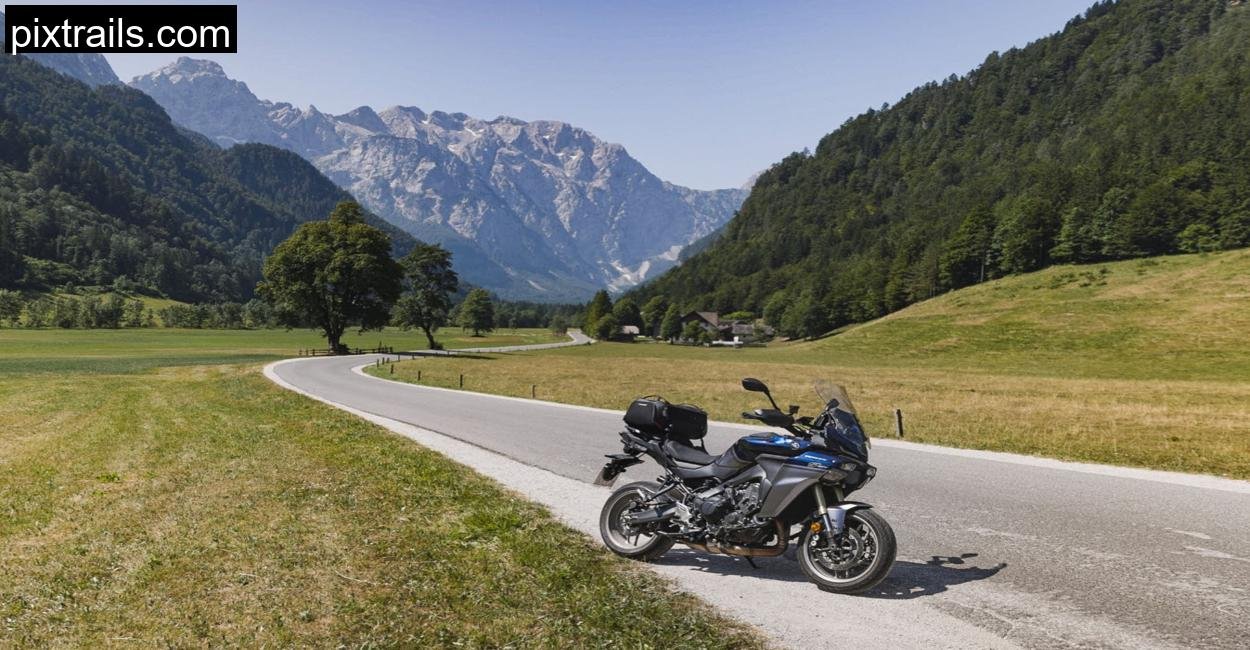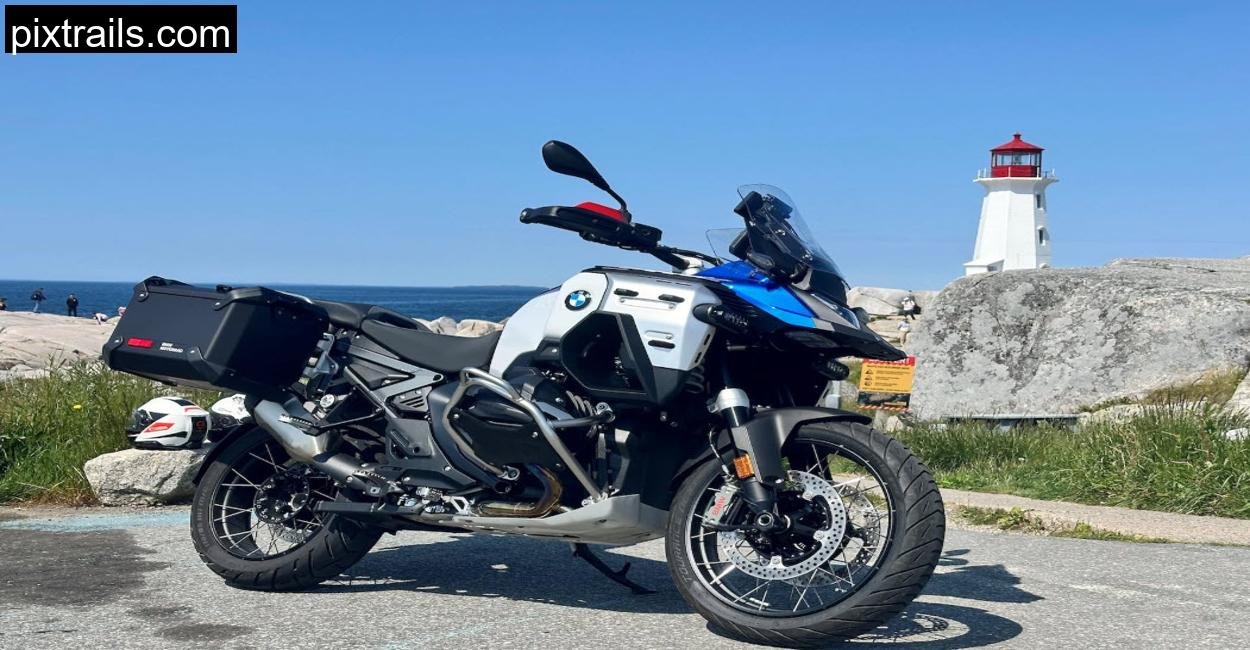The morning air in the Aosta Valley was crisp, carrying the faint scent of pine and the gentle chill rolling down from Mont Blanc. The sun had just begun to spill gold over the towering peaks, touching the vineyards and medieval villages scattered along the valley floor. This was the perfect setting for what I had been waiting for, a long day of riding Yamaha’s newest touring weapon, the 2025 Tracer 9 GT+ equipped with the much-talked-about Y-AMT (Yamaha Automated Manual Transmission) and a radar-assisted cruise control system.
Italy’s Aosta Valley is a rider’s dream: a blend of narrow, cobbled town streets, sweeping alpine curves, and high-altitude passes where snow still lingers in May. Here, a motorcycle is tested not just for its straight-line speed, but for its agility, comfort, and how well it adapts to constantly changing terrain.
First Impressions, The Tracer DNA with a High-Tech Twist
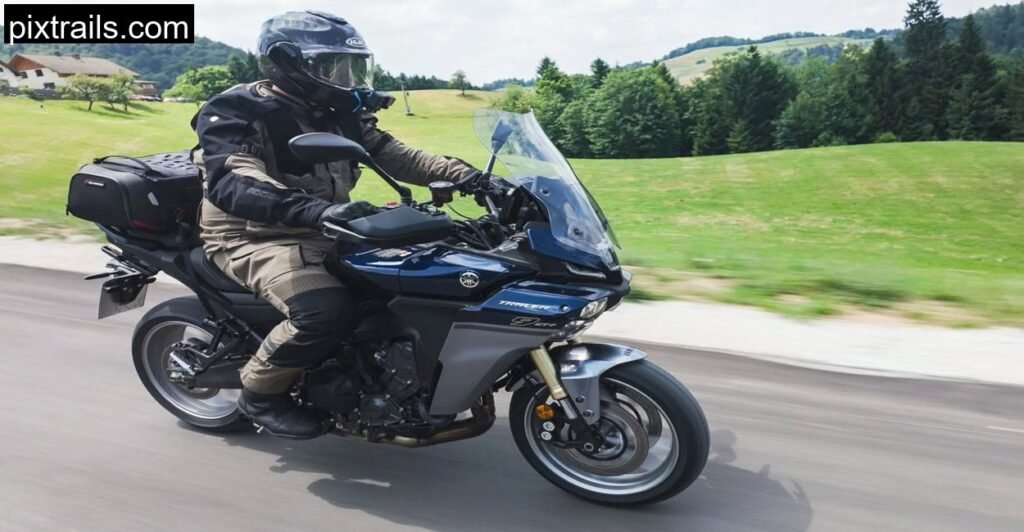
From the moment I walked up to the Tracer 9 GT+ in the hotel parking lot in Aosta town, I knew Yamaha hadn’t messed with the visual DNA that made this model a favorite among sport-touring riders. The sharp front fairing, the angular LED lighting, the sculpted tank, all still here, but with subtle refinements. The radar unit sits neatly integrated under the headlight cluster, almost stealthy if you didn’t know to look for it.
The 890cc CP3 triple-cylinder engine, a Yamaha hallmark, still gives the bike its distinctive muscular stance. Swing a leg over and you’re greeted by an ergonomically perfect riding triangle: upright enough for long days, yet aggressive enough to attack a set of switchbacks without feeling like you’re on a couch.
But the real talking point, even before starting the engine, was the Y-AMT system. No clutch lever. No gear pedal. Just two paddle-style switches on the left bar, ready to handle manual shifts if I chose. Automatic shifting, Yamaha promises, makes touring easier. But does it take away from the spirit of riding? I intended to find out.
Technical Specifications, 2025 Yamaha Tracer 9 GT+ Y-AMT
All technical details provided are taken from the Yamaha’s official manufacturer site. Specifications are based on the most recent data available at the time of review.
| Specification | Detail |
| Engine | 890cc, liquid-cooled, inline 3-cylinder (CP3) |
| Power | 119 hp @ 10,000 rpm |
| Torque | 93 Nm @ 7,000 rpm |
| Transmission | Y-AMT Automated Manual Transmission (manual paddle shift or auto mode) |
| Drive Type | Chain |
| Suspension (Front) | 41mm KYB semi-active USD fork, electronically adjustable |
| Suspension (Rear) | KYB semi-active monoshock, electronically adjustable |
| Brakes (Front) | Dual 298mm discs with radial-mount calipers |
| Brakes (Rear) | Single 245mm disc |
| Electronics | IMU-based cornering ABS, traction control, slide control, radar-assisted ACC, adaptive high beam |
| Seat Height | 820–835 mm (adjustable) |
| Fuel Capacity | 18 liters |
| Weight (Wet) | Approx. 223 kg |
| Price (Europe) | €21,199 (Austria) |
On the Road, Climbing Towards Great Saint Bernard Pass
Pulling out of Aosta’s narrow streets, the Y-AMT system instantly made itself known. In automatic “D” mode, the bike shifted smoothly but held gears longer than I expected. At 50–60 km/h in town, it stubbornly stayed in fourth, making the CP3 rev higher than I’d normally like. The triple is refined enough to take it, but my touring instincts told me it was unnecessary.
Switching to manual paddle mode changed everything. A gentle flick of my left index finger sent it into fifth, dropping the revs and letting the engine hum contentedly. It was here I began to appreciate Y-AMT, in manual, shifts were crisp, almost instantaneous, with none of the lurch you sometimes feel with clumsy quickshifters.
The climb up towards the Great Saint Bernard Pass tested the suspension. I kept it in Sport mode, where the KYB semi-active setup tightened up beautifully for aggressive cornering. The front end felt planted even over mid-corner bumps, and the rear shock delivered just enough feedback without upsetting the bike. The Bridgestone Battlax Sport Touring tires gripped with unwavering confidence, even on damp patches where snowmelt had crossed the tarmac.
The Engine, A Triple That Loves to Dance
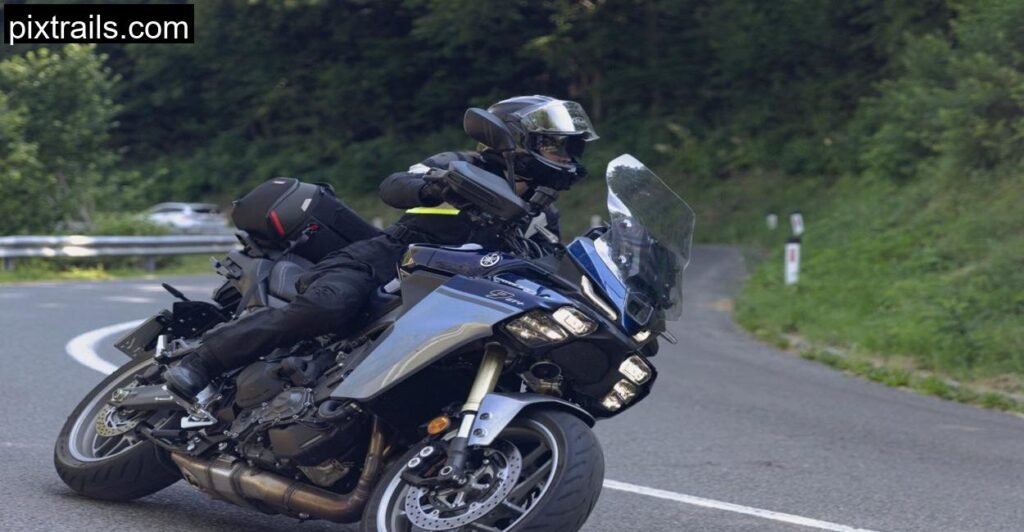
The CP3 engine is the Tracer’s soul, and Yamaha wisely hasn’t messed with its character. It pulls hard from 3,000 rpm, sings in the mid-range, and still has a kick at the top that puts a grin under your helmet.
In the valley floor’s long sweepers, I let it breathe in third and fourth gear, rolling on the throttle to feel that signature triple-cylinder surge. At higher altitudes, where the air is thin, the engine didn’t lose much punch, a testament to Yamaha’s precise fueling and Euro 5+ mapping.
I noticed that in automatic mode, the bike occasionally refused to upshift when I thought it should. On tight uphill hairpins, the electronics seemed hesitant, holding a gear a touch too long. In manual, I could choose my exit gear perfectly, making for smoother drives out of corners. For riders who like precision, Y-AMT is a joy if you commit to manual mode.
Radar Tech & Touring Comfort, The Future Has Arrived
One of the true standouts of the 2025 Tracer 9 GT+ is its radar-assisted cruise control (ACC). On the Autostrada sections between Aosta and Courmayeur, I set the cruise to 130 km/h, and the radar handled the rest, automatically adjusting my speed to maintain distance from cars ahead, then accelerating back up when the lane cleared. It’s smooth, unobtrusive, and genuinely useful for long highway slogs.
The adaptive high beam was equally impressive during a late-evening return ride. Heading back into Aosta after sunset, the matrix LEDs automatically shaded out oncoming traffic while keeping the rest of the road fully lit.
The seat, wide and well-padded, proved comfortable over several hours without a break. The adjustable windscreen, operated electronically, made quick work of crosswinds in the open valley stretches. In the tunnels, I could lower it for more airflow, then raise it again as soon as we hit the chilly mountain air.
Real-World Quirks, Not All Smooth Sailing
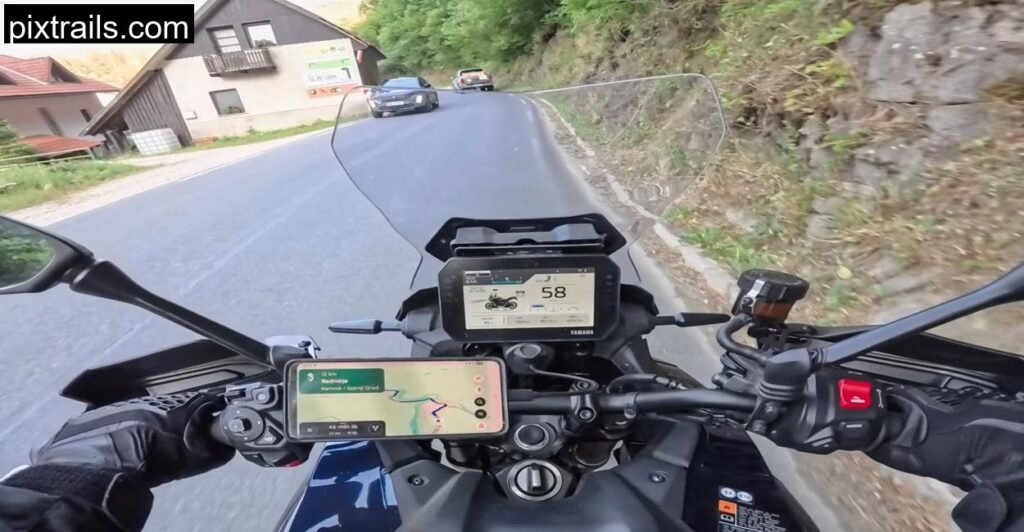
The biggest issue for me wasn’t the radar or electronics, it was Yamaha’s decision to make Y-AMT mandatory on the GT+ trim. While the system is excellent in manual mode, some riders simply prefer a conventional clutch and lever. By removing that option entirely, Yamaha risks alienating part of its loyal fan base.
In town, another small quirk showed itself: with the ignition on, the clutch automatically disengages, meaning you can’t leave the bike in gear to hold it on a slope without turning it completely off. It’s not a dealbreaker, but it’s something you must adapt to.
Also, maneuvering the bike in neutral with the ignition off isn’t as quick as on a traditional gearbox. You need the key nearby, ignition on, and front brake applied before the clutch disengages. On a tour, these little extra steps become noticeable.
Aosta Valley, The Perfect Playground for the Tracer
The Aosta Valley gave the Tracer 9 GT+ the ultimate workout. From tight, technical switchbacks near Cogne to flowing alpine sweepers up Col du Petit Saint-Bernard, the bike handled it all with confidence. The combination of semi-active suspension, radar cruise, and that glorious triple made long days feel effortless.
Lunch stops in small stone villages gave me a chance to appreciate another plus: Yamaha’s panniers. They swallowed my riding gear, camera kit, and a loaf of fresh Italian bread with room to spare. The integrated mounting system kept the bike slim enough to filter through traffic in Aosta’s center without drama.
Conclusion, A Brilliant Tourer with a Divisive Feature
The 2025 Yamaha Tracer 9 GT+ is a deeply capable sport-touring motorcycle. It blends the agility of a sportbike with the comfort of a long-distance tourer, now enhanced with radar tech and the Y-AMT system. The engine is as entertaining as ever, the suspension is a gem, and the electronics package is worthy of far pricier machines.
But Yamaha’s choice to make Y-AMT compulsory on the GT+ may not please everyone. For me, manual mode made the bike shine, but I missed the option of a traditional gearbox. If you can adapt to Y-AMT, and especially if you ride lots of highway miles where radar cruise earns its keep, this machine will reward you with thousands of satisfying kilometers.
Price aside, it’s a tourer that feels built for Europe’s endless twisties and sweeping valleys. And in the Aosta Valley, it felt right at home.
Is Yamaha Tracer 9 GT+ the same as a DCT (dual-clutch) system?
No. Yamaha’s Y-AMT is an automated manual transmission, it uses the same internal gearbox as a manual bike, but clutch and shift actuation are handled by electric motors. You can still control shifts manually via paddles.
Can I get the Yamaha Tracer 9 GT+ without Y-AMT?
No. For 2025, Yamaha offers the GT+ only with Y-AMT. The standard Tracer 9 is available with a conventional manual gearbox.
How does radar cruise control work on the Yamaha Tracer 9 GT+?
The front radar tracks vehicles ahead and adjusts throttle and braking automatically to maintain your chosen following distance. It’s seamless and adjustable on the fly.
